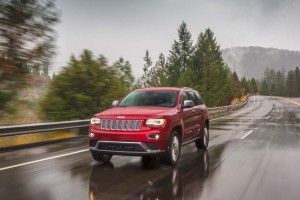
Chrysler will add shifts - but avoid investing in new plants - as the US market continues to recover.
It could be a big year for the U.S. auto industry. After an unexpectedly strong close to 2012, most analysts anticipate the market will grow by as much as another million units this year – even more if Washington lawmakers can come up with a long-term solution to the nation’s debt and taxes debate.
Yet, while 15.5 million vehicles would mark the strongest sales the industry has experienced since the start of the long recession, the bad news is that this would still be well short of the more than 17 million peak the industry experienced during the middle of the last decade.
Or maybe that’s the good news, a number of automotive leaders suggest. Ironically, some argue, it was chasing the previous market record that got the industry into so much trouble, adding too much capacity and then being forced to rely on profit-gobbling incentives to keep all those plants working.
The 17.5 million sales peak set in 2005 was an “an artificial high,” contends Tom Libby, of data tracking service R.L. Polk.
Sergio Marchionne, the outspoken Chrysler CEO, agrees. “The illness” that sent two of the Detroit Big Three automakers into bankruptcy and nearly wrecked the third “was horrible and brought on by ourselves,” he contends.
Nowhere was that more apparent than at General Motors, which was already losing billions even as the market hit its all-time peak. It had built up so much excess capacity it could only keep those plants rolling with hefty incentives.
“I hope we learned a lot” coming out of the company’s 2009 bankruptcy, says Mark Reuss, president of GM’s core North American operations.
The maker used the Chapter 11 process to shed scores of underutilized assembly plants and other facilities, to shed debt and to win critical concessions from its unions. GM’s labor costs declined by nearly a third, to just $50 an hour today, low enough to allow it to bring back some work from abroad – notably production of the Chevrolet Sonic small car being assembled at the Lake Orion assembly plant north of Detroit.
The maker still offers some of the largest incentives in the U.S. market but has been trimming those back, along with the rest of the industry.
The real question is whether GM can maintain its discipline. The maker’s sales rose a little more than 2% last year, but that was well behind the pace of the overall U.S. market, resulting in a 1.5-point decline in market share – to just 16.9%.
With Wall Street demanding better results and a sharp upturn in the maker’s stock price, it is “tempting,” admits Reuss, to do “some bad things.” But he quickly adds that it would be “dangerous” to go back to the old tricks hoping to prop up GM’s sales and share. The only way that will happen profitably, he concludes, is by offering better products – at a reasonable price that still boasts margins strong enough to boost profits.
Ford saw its North American margins surge to 11% during the first three quarters of 2012, and “We’re sticking with the plan,” contends CEO Alan Mulally, who gets much of the credit for restructuring the maker during the deep industry downturn – a challenge that was all the more difficult for Ford since it did not use the bankruptcy process to shed debt and close plants.
If anything, Ford may be taking an overly cautious approach, acknowledges new Chief Operating Officer Mark Fields, who warns that the maker’s “biggest problem” could be a lack of capacity to keep up with the competition if the U.S. market climbs to 16 million annual sales or higher.
Even foreign-owned makers are treading cautiously. Toyota, which has built a network of new assembly plants across the U.S. and Canada, has announced it will put a hold on new factory construction to focus instead on making better use of its existing facilities. Hyundai, which is struggling to meet demand as it bumps against capacity constraints at its own U.S. plant, is looking for ways to break bottlenecks rather than adding another American assembly line.
“We’ve gone from being a company obsessed with volume to one that focuses on brand value,” says Nissan Executive Vice President Andy Palmer. The approach may result in short-term sales shortfalls but, in the long-run means a better brand image and higher margins, Nissan’s goal calling for an increase from the current 5% to 8% global margins by 2016.
It’s not easy to shift direction and accept the idea that it’s okay to see your sales and share lag the market, Palmer concedes. “To go cold turkey is bad,” he says, “for any executive who has spent 30 years pushing sheet metal out of the factory.”
But the last recession proved that the only way to succeed is to respond to natural market requirements rather than trying to create artificial demand.
While industry leaders appear to have learned that lesson in the U.S., it’s far less obvious in Europe, where sales last year fell to their lowest level in two decades. Desperate to keep plants going in a region where government regulations and union contracts limit manufacturers’ flexibility, the industry is repeating many of the same mistakes that nearly destroyed Detroit’s Big Three.
European industry losses are rising to record levels, prompting Fiat/Chrysler CEO Marchionne to warn of an impending “tornado” that could sweep through the industry with unforeseen results.
Whether makers will be able to maintain discipline there is uncertain but in the U.S., the slow but steady revival of the market seems to be giving them the willpower to follow the right path.
